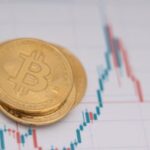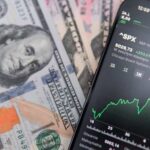On Thursday, May 5, U.S. equity indices were seen nosediving as a series of foreshadowing earnings reports coupled with the Federal Reserve (Fed) policy pulled markets down.
The Nasdaq led the decline to fall by 5%, the first such percentage drop since the mid-2020 during the beginning stages of the Covid pandemic.
On Wednesday, May 4, the central bank raised interest rates by 50 basis points, the first increase of this size since 2000. Stocks rallied as they digested the Fed’s policy moves and interest rate hike as Jerome Powell, Fed Chairman, stated that future rate hikes wouldn’t be larger.
Furthermore, the central bank indicated that it would start reducing its $9 trillion balance sheet.
Digestive issues
As traders digested the news from the Fed and the possible implications it might have on the markets; stocks reversed on Wednesday towards the close of the day. Further exacerbating the fear were earnings reports by online retailers like Etsy (NASDAQ: ETSY) and eBay (NASDAQ: EBAY).
These earnings suggested that online shopping is slowing down since the peak of the pandemic, highlighted none more so by Shopify (NYSE: SHOP), which, combined with its dull earnings, its stock fell more than 14%. In turn, the drop in online shopping raised concerns about the state of the consumer with rising inflation and tightening policy measures.
Thursday session has seen S&P 500 join Nasdaq’s 5% decline by dropping 3.6%, and the Dow finished 3.1% down, falling more than 1,000 points. This sell-off has seen all 11 S&P sectors finish deep in the red, with consumer discretionaries losing 6% as the worst-performing sector.
According to the Founder and CEO of Compound Capital Advisors, Charlie Bilello, the S&P 500 was down 13% in the first 86 trading days of 2022, notably the fourth-worst start to a year in history.
While the Fed is still hawkish, markets are potentially pricing in 200 basis points more of tightening for 2022. Meanwhile, the global financial institution ING shared its views on inflation:
“While the Fed likely won’t admit it, we’re convinced they will be taking a close look at the impact on long run inflation expectations post the FOMC,” ING said. “Currently in the 2.8% area, the 10yr inflation expectation is just about tolerably below a 3% handle. The Fed would like to keep it that way.”
It seems as if no sector is safe to hide from the drawdown in stocks, as all sectors across the board are plunging. A wait and see approach could be the best option for patient investors as some companies are being discounted.
The drawdown should not last forever; companies with strong balance sheets and improving earnings should do well long-term. Investors who can stomach the volatility should do well if they stick to their investing strategies.
Disclaimer: The content on this site should not be considered investment advice. Investing is speculative. When investing, your capital is at risk.








